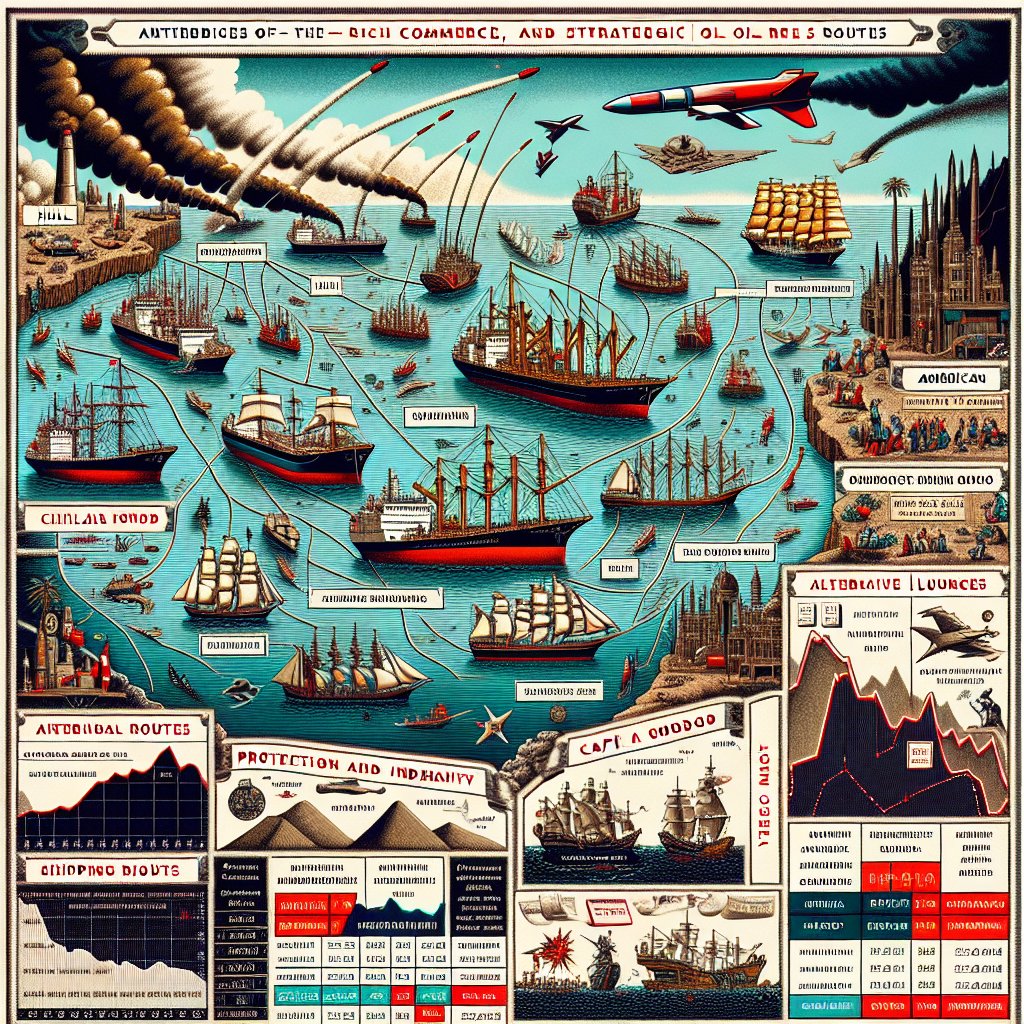Image created by AI
Red Sea Shipping Perils: Insurance Rates Skyrocket Amidst Huthi Missile Barrage
The strategic waters of the Red Sea are witnessing a significant rise in shipping insurance premiums due to persistent missile attacks by Yemen’s Huthi rebels. These escalating threats have forced insurers to increase costs for shipping companies, amplifying the financial burden on an industry already facing high freight rates and protracted journey times caused by alternative routing. The Red Sea, a buoyant channel for 12 percent of worldwide commerce, has seen maritime container transport plummet by nearly a third in 2024 compared to the previous year, as evidenced by the International Monetary Fund (IMF).
The Iran-aligned Huthis claim their assault is in retaliation to the ongoing Israel-Hamas conflict, expressing solidarity with Palestinians in Gaza. This conflict has caused substantial loss of life, including over 1,000 civilian deaths in Israel and a death toll exceeding 29,000 in Gaza, predominantly women and children, as per the respective official figures.
Commercial shipping is now confronted with a dilemma, as vessels necessitate three distinct types of insurance – hull, cargo, and protection and indemnity. Frederic Denefle of Garex emphasizes that the premiums for both ships and cargoes "increased significantly" in response to the persistent Huthi strikes. With the volatile nature of this geopolitical hotspot, insurers like Lloyd’s of London are on high alert, crafting premiums commensurate with perceived threats.
The insurance industry, represented by entities such as the Lloyd’s Market Association (LMA), navigates these choppy waters by designating the Red Sea as a Listed Area. This requires vessels to notify their insurers prior to entry, potentially leading to a temporary war premium being levied atop conventional costs.
Key industry players like Marcus Baker at Marsh and Claire Hamonic at Ascoma International testify to the substantial inflation of these premiums – between fivefold and tenfold hikes have not been uncommon for transits through the Red Sea.
Nationality also plays a pivotal role in determining risk assessment and associated premiums. Anderson of Vessel Protect highlights that vessels connected to the US and UK face increased targeting from Huthis, while those of other nationalities, like Chinese or Hong Kong-flagged ships, might see less of a premium uptick.
Amid these threats, some shipping companies opt for a detour via southern Africa to bypass the Red Sea's perils. This alternate route, although free from the immediate concern of missile attacks, invites additional costs and prolongs travel by up to 20 days for slower vessels. Moreover, the potential resurgence of piracy around the Cape of Good Hope and the coastline toward Somalia remains a significant concern, as warned by Hamonic.
In conclusion, as the Red Sea becomes a theatre for political objectives wrought through military means, the repercussions are felt not just in the immediate geopolitical sphere, but also in the global maritime industry’s day-to-day operations. Insurance premiums, reflecting the gravity and frequency of these incursions, serve as a barometer for the current security climate, ultimately impacting trade routes, company decisions, and possibly the resurgence of piracy in adjacent waters.










